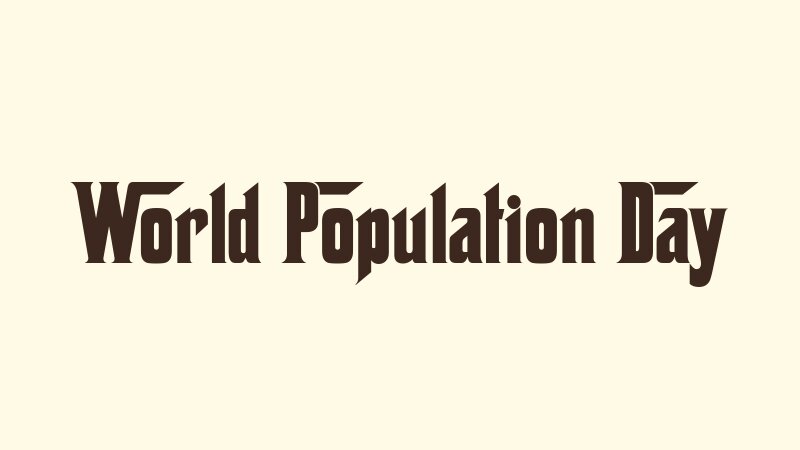World Population Day Calendar (2026-2040)
| Year | Day | Date | Days Left |
|---|---|---|---|
| 2026 | Sat | July 11, 2026 | 227 days |
| 2027 | Sun | July 11, 2027 | 592 days |
| 2028 | Tue | July 11, 2028 | 958 days |
| 2029 | Wed | July 11, 2029 | 1323 days |
| 2030 | Thu | July 11, 2030 | 1688 days |
| 2031 | Fri | July 11, 2031 | 2053 days |
| 2032 | Sun | July 11, 2032 | 2419 days |
| 2033 | Mon | July 11, 2033 | 2784 days |
| 2034 | Tue | July 11, 2034 | 3149 days |
| 2035 | Wed | July 11, 2035 | 3514 days |
| 2036 | Fri | July 11, 2036 | 3880 days |
| 2037 | Sat | July 11, 2037 | 4245 days |
| 2038 | Sun | July 11, 2038 | 4610 days |
| 2039 | Mon | July 11, 2039 | 4975 days |
| 2040 | Wed | July 11, 2040 | 5341 days |
Global Awareness • 11 July
World Population Day: Understanding Our Growing World
Each year on 11 July, World Population Day encourages people worldwide to reflect on how global population trends shape our lives, our communities, and our future.
This observance is not simply a calendar date—it is a moment to pause and explore how human growth connects with health, opportunity, equality, and the planet’s long-term sustainability.
What Is World Population Day?
World Population Day is an annual observance raising awareness about population issues that influence global well-being.
It highlights how population dynamics affect:
- Healthcare access and reproductive rights
- Education for children and young people
- Environmental and resource sustainability
- Social and economic development
- Gender equality and empowerment
At its core, the day invites everyone to understand the connection between how human populations grow and how our shared world evolves.
Quick Highlights
- Date: 11 July
- Focus: Global population issues
- Current world population: Over 8 billion
- Key theme: Varies each year
A day for global reflection, meaningful dialogue, and taking small steps to support a balanced future.
How Did This Day Begin?
The roots of World Population Day go back to “Five Billion Day” on 11 July 1987, when the global population reached an important milestone.
This moment brought worldwide attention to the rapid pace of population growth.
The United Nations Development Programme later proposed an international day focused entirely on population issues.
Since its early observance in the 1990s, World Population Day has evolved into a global platform for discussing rights, health, demographic shifts, and sustainable development.
Today, the conversation is more nuanced than ever—recognizing diverse challenges faced by both fast-growing nations and ageing societies.
Why Global Population Trends Matter
As the number of people worldwide surpasses 8 billion, the impacts are far-reaching.
Understanding these trends helps governments, communities, and individuals prepare for the future.
- Economic growth: Larger populations can support innovation and labour markets, but may strain infrastructure.
- Urbanisation: As cities expand, housing, transportation, and public services must adapt rapidly.
- Healthcare needs: From maternal care to elderly support, population trends guide health planning.
- Education: Ensuring access to quality education becomes essential for sustainable progress.
- Environmental impact: Resource consumption patterns influence biodiversity and climate resilience.
It’s About More Than Numbers
While population figures draw attention, the deeper story lies in quality of life and
equal access to resources.
Some nations are experiencing rapid growth — others are shrinking and ageing.
Both situations bring unique challenges requiring understanding and collaboration.
Recognizing these differences helps create solutions that support every community’s needs.
A Shared Future: What World Population Day Encourages Us To Reflect On
This observance encourages people everywhere to explore how human development, technology, education, and environmental stewardship can work together.
The focus is not on fear, but on informed choices,
improved well-being,
and a fair future for all.
By understanding our growing world, we take the first step toward building solutions that support both people and the planet.
